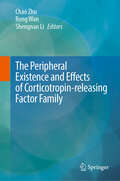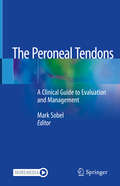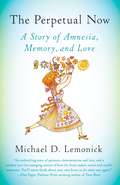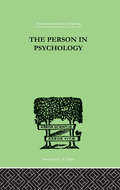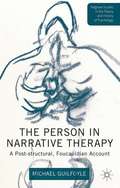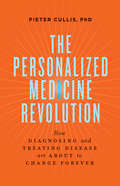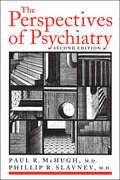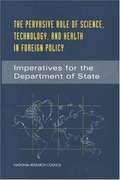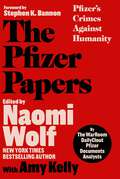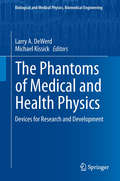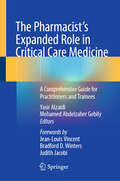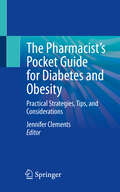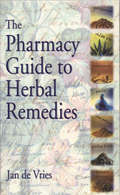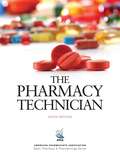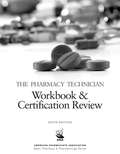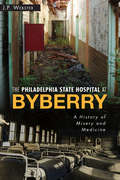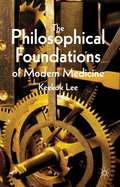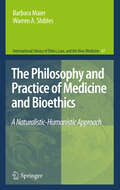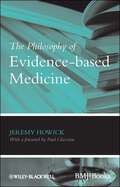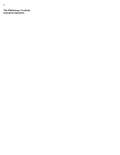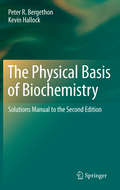- Table View
- List View
The Peripheral Existence and Effects of Corticotropin-releasing Factor Family
by Chao Zhu Rong Wan Shengnan LiThis book intends to report the peripheral effects of corticotropin-releasing factor (hormone) family (CRFs), different from its role in the CRH-ACTH-adrenocorticoids axis. The book collects data about CRFs&’ peripheral secretion from many types of cells and their effects on cardiovascular functions and carcinogenesis. The book is likely to be of interest to graduate students and researchers in the field of biomedicine, especially in the field of cardiovascular diseases and cancer.
The Peripheral T-Cell Lymphomas
by Won Seog Kim Owen A. O?Connor Pier Luigi ZinzaniThe first text dedicated to peripheral T-cell lymphomas and their classification, diagnosis, and management Peripheral T-cell lymphomas (PTCL) are a diverse group of lymphoid malignancies that develop from mature T cells and natural killer (NK) cells. PTCL represents 10-15% of all cases of non-Hodgkin lymphoma in the US, and up to 20-25% of cases in South America, Asia, and other regions around the world. The role of different etiologic factors and the variation of geographic distribution makes PTCL one of the most difficult types of cancer to understand and treat. The first book of its kind, The Peripheral T-Cell Lymphomas presents a far-reaching survey of this complex and rare group of blood cancers. Featuring contributions from thought-leaders concerned with all aspects of PTCL, this authoritative text covers biology, epidemiology, classification, approved and emerging drugs, molecular genetics, and more. Detailed clinical chapters address diagnosis, prognosis, and treatment of each of the major PTCL subtypes identified in the 2018 WHO Classification of Tumors of Hematopoietic and Lymphoid Tissues. This much-needed resource: Covers the biological basis, epidemiology, classification, and treatment of PTCL Discusses the future of the field, including global collaboration efforts and novel approaches to PCTL Explores the role of biologics in PTCL and autologous and allogeneic stem-cell transplantation Offers new insights on molecular pathogenesis, innovative therapeutics, and novel drug combinations Features contributions from the Chairs The T-Cell Lymphoma Forum: the world’s largest meeting focused on PTCL Reflecting the unique epidemiology and genetic diversity of the PTCL, The Peripheral T-Cell Lymphomas is an indispensable source of data, insight, and references for the medical community, particularly those working in oncology and hematology.
The Peroneal Tendons: A Clinical Guide to Evaluation and Management
by Mark SobelThis unique book is a practical, “go to” source of comprehensive information on the care of peroneal tendon injuries, accurately illustrating this hot topic with many anatomical drawings of how the anatomy influences the diseases we see clinically. This presentation opens with a review of the normal anatomy, biomechanics and examination of the peroneal tendons, followed by a discussion of congenital variations and imaging strategies used in diagnosis and evaluation. Both conservative and surgical management techniques are then elucidated in injury-specific chapters, from peroneus brevis splits and stenosing tenosynovitis to painful os peroneum syndrome (POPS) and acute dislocation. Chapters on rehabilitation and comorbid pathologies round out the presentation. The diagnosis of peroneal tendon injury is much more common today than it was 20 years ago. Utilizing the latest evidence and presenting the most cutting-edge management techniques, The Peroneal Tendons will be useful for orthopedic and podiatric surgeons, sports medicine specialists, and students and residents in these areas.
The Perpetual Now: A Story of Amnesia, Memory, and Love
by Michael D. LemonickIn the aftermath of a shattering illness, Lonni Sue Johnson lives in a "perpetual now," where she has almost no memories of the past and a nearly complete inability to form new ones. The Perpetual Now is the moving story of this exceptional woman, and the groundbreaking revelations about memory, learning, and consciousness her unique case has uncovered. Lonni Sue Johnson was a renowned artist who regularly produced covers for The New Yorker, a gifted musician, a skilled amateur pilot, and a joyful presence to all who knew her. But in late 2007, she contracted encephalitis. The disease burned through her hippocampus like wildfire, leaving her severely amnesic, living in a present that rarely progresses beyond ten to fifteen minutes. Remarkably, she still retains much of the intellect and artistic skills from her previous life, but it's not at all clear how closely her consciousness resembles yours or mine. As such, Lonni Sue's story has become part of a much larger scientific narrative—one that is currently challenging traditional wisdom about how human memory and awareness are stored in the brain. In this probing, compassionate, and illuminating book, award-winning science journalist Michael D. Lemonick uses the unique drama of Lonni Sue Johnson's day-to-day life to give us a nuanced and intimate understanding of the science that lies at the very heart of human nature.
The Persecuted Drug: The Story of DMSO
by Pat McgradyDMSO remains a truly amazing substance. It is a versatile solvent; it probably will dissolve more chemicals than any other solvent. It penetrates the skin and is in the bloodstream within seconds; and it carries many dissolved chemicals with it. It freezes at a couple of degrees below room temperature. As a runoff product of the paper industry, it is abundant and should be cheap. (With inflation and the middleman's profits, its price during the last half-dozen years has multiplied thirty fold. But considering its many uses, it still is cheap at the current $10 a pint.)
The Person In Psychology: REALITY OR ABSTRACTION (International Library Of Psychology)
by Lafitte, PaulFirst Published in 1999. Routledge is an imprint of Taylor & Francis, an informa company.
The Person in Narrative Therapy
by Michael GuilfoyleThis book argues that narrative practice does not have a coherent formulation of personhood in the way one finds in other fields, such as psychoanalysis and cognitive-behavioural therapy. It examines the post-structural principles that underpin narrative practice, which make available powerful conceptual tools for theorizing the person.
The Personalized Medicine Revolution
by Pieter CullisEvery one of us is unique. With recent advances in technology, we now know that that statement is more true that ever: we are each individuals, right down to a molecular level - a one-of-a-kind combination of genes, proteins, and metabolism. So why does healthcare still take a one-size-fits-all approach? The same methods are used on everyone to diagnose illness, and the same drugs are used to treat it - despite the fact that those methods and treatments are not effective for everyone and are even harmful for some. Shouldn't our medicine be tailored to our differences? The Personalized Medicine Revolution explores recent advances in genomics, the study of the human genome - as well as its cousins proteomics, metabolomics, microbiomics, and the like - and explains how technology is even now changing the way medicine is delivered. Along the way, it takes the reader through the five critical healthcare areas that will be transformed most radically by personalized medicine - prediction, prevention, diagnosis, treatment, and monitoring - and examines the practical and ethical issues involved. Finally, it details how readers can use personalized medicine to take charge of their own health and build a stronger and safer medical system.
The Perspectives of Psychiatry
by Phillip R. Slavney Paul R. McHughSubstantially revised to include a wealth of new material, the second edition of this highly acclaimed work provides a concise, coherent introduction that brings structure to an increasingly fragmented and amorphous discipline. Paul R. McHugh and Phillip R. Slavney offer an approach that emphasizes psychiatry's unifying concepts while accommodating its diversity. Recognizing that there may never be a single, all-encompassing theory, the book distills psychiatric practice into four explanatory methods: diseases, dimensions of personality, goal-directed behaviors, and life stories. These perspectives, argue the authors, underlie the principles and practice of all psychiatry. With an understanding of these fundamental methods, readers will be equipped to organize and evaluate psychiatric information and to develop a confident approach to practice and research.
The Pervasive Role of Science, Technology, and Health in Foreign Policy: Imperatives for the Department of State
by Technology Committee on Science Health Aspects of the Foreign Policy Agenda of the United StatesIssues involving science, technology, and health (STH) have moved to the forefront of the international diplomatic agenda. Other vital issues linked to technological developments pervade longer-range foreign policy concerns. Thus, STH considerations are often central to the Department of State’s bilateral and multilateral interactions with other governments. STH aspects play a large role in discussions of such critical topics as nuclear nonproliferation, use of outer space, population growth, adequate and safe food supply, climate change, infectious diseases, energy resources, and competitiveness of industrial technologies. In addressing these issues, expert STH knowledge is essential to the anticipation and resolution of problems and to the achievement of foreign policy goals. The Department, recognizing that it requires strengthened capabilities to address such an array of topics, asked for suggestions by the National Research Council as to how it could better deal with foreign policy issues with STH content.
The Pfizer Papers: Pfizer's Crimes Against Humanity
by The WarRoom/DailyClout Pfizer Documents AnalystsThe Pfizer Papers features new reports written by WarRoom/DailyClout research volunteers, which are based on the primary source Pfizer clinical trial documents released under court order and on related medical literature. The book shows in high relief that Pfizer&’s mRNA COVID-19 vaccine clinical trial was deeply flawed and that the pharmaceutical company knew by November 2020 that its vaccine was neither safe nor effective. The reports detail vaccine-induced harms throughout the human body, including to the reproductive system; show that women suffer vaccine-related adverse events at a 3:1 ratio; expose that vaccine-induced myocarditis is not rare, mild, or transient; and, shockingly, demonstrate that the mRNA vaccines have created a new category of multi-system, multi-organ disease, which is being called &“CoVax Disease.&” Despite the fact that Pfizer committed in its own clinical trial protocol to follow the placebo arm of its trial for twenty-four months, Pfizer vaccinated approximately 95 percent of placebo recipients by March 2021, thus eliminating the trial&’s control group and making it impossible for comparative safety determinations to be made. Just as importantly, The Pfizer Papers makes it clear that the US Food and Drug Administration knew about the shortfalls of Pfizer&’s clinical trial as well as the harms caused by the company&’s mRNA COVID vaccine product, thus highlighting the FDA&’s abject failure to fulfill its mission to &“[protect] the public health by ensuring the safety, efficacy, and security of human and veterinary drugs, biological products, and medical devices.&” The Pfizer Papers offers an in-depth look at how Big Pharma, the US government, and healthcare entities stand protected behind the broad legal immunity provided by the Public Readiness and Emergency Preparedness Act (PREP Act) when creating, prescribing, and administering vaccines; and, under that shield of protection, do what is best for their bottom lines rather than for the health and well-being of Americans.
The Phantoms of Medical and Health Physics
by Larry A. Dewerd Michael KissickThe purpose and subject of this book is to provide a comprehensive overview of all types of phantoms used in medical imaging, therapy, nuclear medicine and health physics. For ionizing radiation, dosimetry with respect to issues of material composition, shape, and motion/position effects are all highlighted. For medical imaging, each type of technology will need specific materials and designs, and the physics and indications will be explored for each type. Health physics phantoms are concerned with some of the same issues such as material heterogeneity, but also unique issues such as organ-specific radiation dose from sources distributed in other organs. Readers will be able to use this book to select the appropriate phantom from a vendor at a clinic, to learn from as a student, to choose materials for custom phantom design, to design dynamic features, and as a reference for a variety of applications. Some of the information enclosed is found in other sources, divided especially along the three categories of imaging, therapy, and health physics. To our knowledge, even though professionally, many medical physicists need to bridge the three catagories described above.
The Pharmaceutical Regulatory Process (Drugs and the Pharmaceutical Sciences)
by Ira R. Berry Robert P. MartinThis Second Edition examines the mechanisms and means to establish regulatory compliance for pharmaceutical products and company practices. It focuses on major legislative revisions that impact requirements for drug safety reviews, product regulatory approvals, and marketing practices. Written by top industry professionals, practicing attorneys, an
The Pharmacist's Expanded Role in Critical Care Medicine: A Comprehensive Guide for Practitioners and Trainees
by Yasir Alzaidi Mohamed Abdelzaher GebilyThere are few textbooks aimed specifically at critical care pharmacists, particularly in terms of their potential role in diagnosis. Recognizing this important gap, the editors of this comprehensive book have gathered together 55 chapters that provide an overview of core aspects of critical care patient management from the pharmacist’s perspective. The chapters, written by an international team of more than 100 experts, provide an important update on the physiological and pathological mechanisms of key areas of critical illness and the diagnostic and therapeutic approaches to these conditions for the pharmacist. There are chapters focusing on specific diseases or conditions, including shock, acute liver failure, acute kidney injury, delirium, and acute pulmonary embolism; chapters on interpretation of diagnostic tests, such as radiology and electrocardiography; chapters on therapeutic interventions, including mechanical ventilation, intravenous fluids, renal replacement therapy, ECMO, nutrition, and blood transfusion; and chapters on specific groups of ICU patients, including obstetric, oncology, transplant, and burn patients. Two of the chapters, on the approach to clinical reasoning in critical care and sustainable pharmacy practice in the ICU, are unique chapters to pharmacy education and training. Providing an up-to-date overview of topics related to critical care and emphasizing the importance of correct diagnosis in providing appropriate and optimal treatment, this collection will help prepare ICU pharmacists for their multifaceted responsibilities as members of the ICU team, including an expanded role in limiting misdiagnosis. This book will serve as a useful resource for all pharmacists involved in the management of critically ill patients, whatever their level of experience and training.
The Pharmacist’s Pocket Guide for Diabetes and Obesity: Practical Strategies, Tips, and Considerations
by Jennifer ClementsThe prevalence of diabetes and obesity has increased over the past decade and is expected to continue to rise until at least 2030. There is a clear association between diabetes and obesity due to insulin resistance, chronic inflammatory state, and endothelial dysfunction. Since diabetes and obesity are commonly encountered chronic conditions, pharmacists and associated trainees are in a unique position to collect and assess information about these issues within the communities they serve. With the help of the expert advice in The Pharmacist&’s Pocket Guide for Diabetes and Obesity, pharmacists, trainees, and other health care professionals can develop and implement a person-centered plan with appropriate monitoring and follow-up to omtimize outcomes for patients with diabetes and obesity. The Pharmacist&’s Pocket Guide for Diabetes and Obesity has separate sections on diabetes and obesity which include the clinical assessment, pharmacological and non-pharmacological interventions, management of complications, and information on special populations for each condition. The text wraps up with a section on the pharmacist's role in clinical scenarios and another on the future of research and practice in pharmacy. This book fills a gap in the existing literature by providing a conveniently sized, quick-reference guide full of practical strategies, tips, and considerations for patients with diabetes and obesity for a broad audience of pharmacists, trainees in pharmacy, and other health care professionals.
The Pharmacy Guide to Herbal Remedies
by J VriesThe Pharmacy Guide to Herbal Remedies is the first in a series of books by Jan de Vries. It is written with a common sense approach and explains how herbal remedies can complement today's lifestyle by combining natural cures with pharmaceutical and orthodox medicines. The book demonstrates that, despite an age and society blighted by modern day diseases, it is possible for every person to maintain and obtain optimum health by combining complementary and orthodox healthcare methods. This book should be in every household as a quick and easy reference guide.
The Pharmacy Practice Handbook of Medication Facts
by Harold L. Kirschenbaum Michelle KalisBecause of the rapidly increasing number of marketed pharmacologic agents, professionals are finding it increasingly difficult to provide colleagues and patients with the types of patient-oriented information they need. You need a handbook with the essential data in one, easy to reference format. Good news - The Pharmacy Practice Handbook of Medica
The Pharmacy Technician (Sixth Edition)
by Perspective PressThe Pharmacy Technician, Sixth Edition, is a valuable tool for pharmacy technician students. Endorsed by the American Pharmacists Association (APhA), this book prepares students for national certification exams such as the Pharmacy Technician Certification Exam (PTCE) and the Exam for Certification of Pharmacy Technicians (ExCPT). This book is a practical text for understanding the principles, career concepts, and pharmacy skills needed to be a successful pharmacy technician. It offers clear, concise information to help students learn the material and pass the national certification exams.
The Pharmacy Technician Workbook and Certification Review (Basic Pharmacy and Pharmacology)
by American Pharmacy AssociationThis workbook was developed to correspond with the textbook, The Pharmacy Technician, Sixth Edition, by Perspective Press. For pharmacy technician students, it is a valuable tool for success. It provides a useful format for memorizing important information and checking knowledge. Hundreds of key concepts and terms are carefully explained, and there are over 1,000 exercises and problems for self testing. Answers are included at the back of the book "In the Workplace" sections provide sample job-related documents and skills checklists. The sixth edition includes additional skills checklists as well as "In the Workplace Activities" that provide practical, active-learning applications of the concepts discussed in The Pharmacy Technician. Working out these exercises and activities successfully will help you to succeed in your training.
The Philadelphia State Hospital at Byberry: A History of Misery and Medicine (Landmarks Ser.)
by John Paul WebsterThis account of the infamous asylum is “an excellent record of greed and corruption, but it is also a powerful testimonial to compassion and kindness” (Hidden City).The Quaker City and its hospitals were pioneers in the field of mental health. Yet by the end of the nineteenth century, its institutions were crowded and patients lived in shocking conditions. The mentally ill were quartered with the dangerously criminal. By 1906, the city had purchased a vast acreage of farmland incorporated into the city, and the Philadelphia Hospital dubbed its new venture Byberry City Farms. From the start, its history was riddled with corruption and committees, investigations and inquests, appropriations and abuse. Yet it is also a story of reform and redemption, of heroes and human dignity—many dedicated staff members did their best to help patients whose mental illnesses were little understood and were stigmatized by society.“The closed hospital’s almost forgotten story intrigued him immediately and then became his passion . . . Webster tells the hospital’s 100-year story in a brisk, easy-to-read style, and the book is illustrated with 75 photographs from the Historical Society of Pennsylvania, Temple University Urban Archives, the Pennsylvania State Archives, the Athenaeum of Philadelphia, PhillyHistory.org and friends.” —Northeast Times“Webster . . . wrote his book because of his fascination with an abandoned building he discovered in 2002. He wanted to tell the story of Byberry, one he believes many people do not fully understand.” —Philadelphia Neighborhoods
The Philosophical Foundations of Modern Medicine
by Keekok LeeAn exploration of the philosophical foundation of modern medicine which explains why such a medicine possesses the characteristics it does and where precisely its strengths as well as its weaknesses lie. Written in plain English, it should be accessible to anyone who is intellectually curious, lay persons and medical professionals alike.
The Philosophy and Practice of Medicine and Bioethics
by Barbara Maier Warren A. ShiblesThis book challenges the unchallenged methods in medicine, such as "evidence-based medicine," which claim to be, but often are not, scientific. It completes medical care by adding the comprehensive humanistic perspectives and philosophy of medicine. No specific or absolute recommendations are given regarding medical treatment, moral approaches, or legal advice. Given rather is discussion about each issue involved and the strongest arguments indicated. Each argument is subject to further critical analysis. This is the same position as with any philosophical, medical or scientific view. The argument that decision-making in medicine is inadequate unless grounded on a philosophy of medicine is not meant to include all of philosophy and every philosopher. On the contrary, it includes only sound, practical and humanistic philosophy and philosophers who are creative and critical thinkers and who have concerned themselves with the topics relevant to medicine. These would be those philosophers who engage in practical philosophy, such as the pragmatists, humanists, naturalists, and ordinary-language philosophers. A new definition of our own philosophy of life emerges and it is necessary to have one. Good lifestyle no longer means just abstaining from cigarettes, alcohol and getting exercise. It also means living a holistic life, which includes all of one's thinking, personality and actions. This book also includes new ways of thinking. In this regard the "Metaphorical Method" is explained, used, and exemplified in depth, for example in the chapters on care, egoism and altruism, letting die, etc.
The Philosophy of Evidence-based Medicine
by Jeremy H. HowickEvidence-based medicine (EBM) has become a required element of clinical practice, but it is critical for the healthcare community to understand the ongoing controversy surrounding EBM. Seeking to address questions raised by critics, The Philosophy of Evidence-based Medicine challenges the over dependency of EBM on randomized controlled trials. This book also explores EBM methodology and its relationship with other approaches used in medicine.
The Phlebotomy Textbook
by Susan King Strasinger Marjorie Schaub Di LorenzoRely on this comprehensive resource to master the techniques you need to safely obtain quality specimens. You’ll understand all the how's and whys that lead to success in this rapidly changing field. Inside, you’ll find the up-to-date coverage of routine procedures and their complications as well specialized procedures, quality and infection control, state-of-the-art equipment, medical terminology, ethical and legal issues, body systems, and related diagnostic laboratory tests. Videos and animations online help you to excel.
The Physical Basis of Biochemistry
by Peter R. Bergethon Kevin Hallockadvanced undergraduate/beginning graduate level students and would be applied to courses focusing on three different areas: Foundations of molecular biophysics Macromolecular structure and assembly Methods in physical biochemistry
